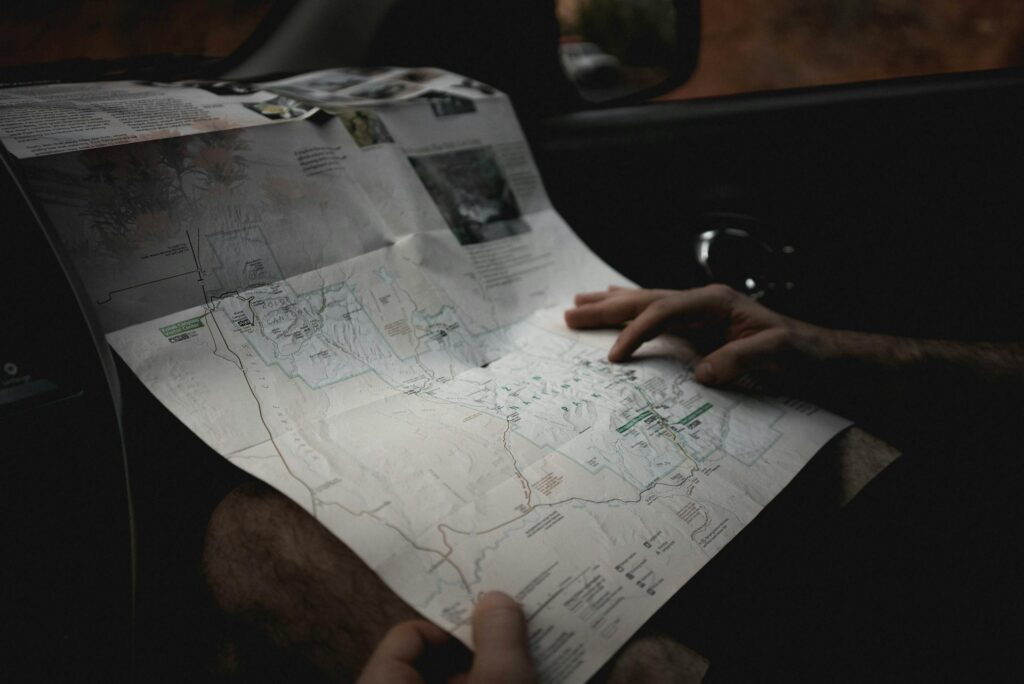Embarking on a road trip offers a unique blend of adventure and freedom, allowing you to explore new destinations at your own pace. However, the key to a successful and enjoyable road trip lies in careful planning and packing the right essentials. This ultimate packing guide provides everything you need to know about road trip essentials, from must-have items to tips that will keep you comfortable, safe, and entertained on the road.
Why Packing the Right Essentials Matters
Unlike air travel, where you’re limited to what fits in your suitcase, a road trip offers more flexibility in what you can bring. However, packing wisely ensures that you have everything you need without cluttering your vehicle or making it difficult to access essential items. The right gear and supplies can enhance your comfort, prevent unexpected issues, and make your journey more enjoyable.
Must-Have Road Trip Essentials

1. Navigation Tools
Why It’s Important
Reliable navigation is crucial for a smooth road trip. While smartphones with GPS are commonly used, having backup navigation tools can help you avoid getting lost, especially in areas with poor cell service.
Examples
- Google Maps: A trusted app for real-time GPS navigation, traffic updates, and route planning. Download maps for offline use to stay on track even in remote areas. Learn more at Google Maps.
- Rand McNally Road Atlas: A physical map is a reliable backup in case your GPS fails or your phone loses battery. Available on Rand McNally.
Tips for Use
- Download Offline Maps: Before hitting the road, download offline maps of your route and destination. This ensures you have access to directions even without internet service.
- Keep a Physical Map Handy: In addition to digital navigation, bring a physical map or road atlas for areas with limited connectivity.
2. Emergency and First Aid Kit
Why It’s Important
Being prepared for emergencies is crucial on a road trip. A well-stocked emergency kit can help you handle minor injuries, vehicle breakdowns, or other unexpected situations.
Examples
- AAA Roadside Emergency Kit: This kit includes jumper cables, a flashlight, a first-aid kit, and other essentials to help you manage roadside emergencies. Available on AAA.
- Red Cross First Aid Kit: A comprehensive kit that includes bandages, antiseptics, and other supplies to treat minor injuries. Find it on Red Cross.
Tips for Packing
- Include Vehicle-Specific Items: Make sure your emergency kit includes items like tire repair tools, a tire pressure gauge, and a multi-tool.
- Regularly Check and Replenish: Before your trip, check your emergency and first aid kits to ensure they are fully stocked and that nothing has expired.
3. Snacks and Drinks
Why It’s Important
Having a variety of snacks and drinks on hand keeps you energized and hydrated, especially during long stretches of driving or when food options are limited.
Examples
- Healthy Snacks: Pack a mix of fresh fruit, nuts, trail mix, granola bars, and protein bars. Check out EatingWell’s Guide to Healthy Road Trip Snacks.
- Reusable Water Bottles: Bring insulated water bottles like the Hydro Flask to keep drinks cold for hours.
Tips for Packing
- Use a Cooler: Pack perishable items like fruit, cheese, and yogurt in a cooler with ice packs to keep them fresh.
- Plan for Quick Access: Store snacks and drinks in an easily accessible spot, such as the passenger seat or a designated snack bag, to minimize distractions while driving.
4. Comfort Items
Why It’s Important
Comfort items like neck pillows, blankets, and comfortable clothing can make long drives more enjoyable, helping you arrive at your destination feeling refreshed.
Examples
- Travel Neck Pillow: The Trtl Pillow is compact and provides excellent neck support for naps on the road. Available on Amazon.
- Lightweight Blanket: A soft, lightweight blanket like the Cozy Earth Bamboo Blanket keeps passengers warm and comfortable during the trip.
Tips for Packing
- Bring Layers: Pack clothing in layers, as temperatures can fluctuate during long drives. A hoodie or jacket is perfect for layering.
- Organize Comfort Items: Keep pillows, blankets, and other comfort items within reach so passengers can easily grab them when needed.
5. Entertainment
Why It’s Important
Keeping yourself and your passengers entertained is key to preventing boredom on long drives. Whether you prefer music, podcasts, or audiobooks, having entertainment options can make the journey more enjoyable.
Examples
- Spotify or Apple Music: Create road trip playlists on music streaming platforms like Spotify or Apple Music to keep the energy up.
- Audible: Download audiobooks from Audible to enjoy captivating stories while you drive.
Tips for Packing
- Download Content Ahead of Time: Download music, podcasts, and audiobooks before you leave to avoid streaming issues in areas with poor connectivity.
- Bring Entertainment for Kids: If you’re traveling with children, pack books, travel games, or tablets with pre-loaded games and movies to keep them entertained.
Related Resource
For more road trip snack ideas, check out EatingWell’s Guide to Healthy Road Trip Snacks.
How to Pack Your Vehicle for a Road Trip

1. Maximize Space with Roof Racks or Carriers
Using a roof rack or cargo carrier allows you to maximize space in your vehicle by storing bulky items like luggage, camping gear, or sports equipment on the roof.
Examples
- Thule Motion XT Rooftop Cargo Carrier: A sleek and spacious cargo carrier that provides additional storage space for road trips. Available on Thule.
- Yakima SkyBox: Another excellent option for adding storage space, with an aerodynamic design to minimize drag. Find it on Yakima.
2. Keep Essentials Accessible
When packing your vehicle, make sure essential items like snacks, drinks, maps, and emergency supplies are easily accessible. Store them in the front or rear seat where they can be quickly reached.
3. Pack Smart to Optimize Space
Use packing cubes, organizers, and soft-sided bags to maximize space in your vehicle. Soft bags are easier to fit in tight spaces compared to hard-sided luggage.
4. Balance the Load
Distribute the weight evenly in your vehicle to maintain stability while driving. Heavier items should be placed low and centered, while lighter items can be stored on top or in a roof rack.
Final Tips for a Successful Road Trip
- Plan Your Route: Before setting off, plan your route and identify key stops, rest areas, and attractions along the way. Use apps like Roadtrippers to find interesting stops and optimize your route.
- Take Breaks: Regular breaks are essential to prevent fatigue and keep everyone refreshed. Aim to stop every two hours to stretch, use the restroom, and refuel if needed.
- Prepare for the Unexpected: Bring a roadside assistance kit, including items like a spare tire, jack, flashlight, and extra phone charger, to be prepared for any situation.
By packing the right road trip essentials and organizing your vehicle efficiently, you can ensure a comfortable, safe, and enjoyable journey. Whether you’re exploring scenic byways, visiting national parks, or driving across the country, being well-prepared will help you make the most of your road trip adventure.
Related Sites for Further Reading
- Google Maps
- Rand McNally Road Atlas
- AAA Roadside Emergency Kit
- Red Cross First Aid Kit
- EatingWell’s Guide to Healthy Road Trip Snacks
- Hydro Flask
- Amazon’s Trtl Pillow
- Cozy Earth Bamboo Blanket
- Spotify
- Audible

